Question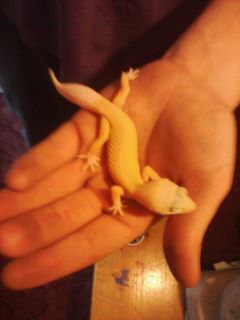 frankie the lizard
frankie the lizard
QUESTION: What kind of lizard do I have? He/She is pink yellow and white but he/she is very friendley :)
ANSWER: This is a leopard gecko.
It requires a daytime temperature of 80F with a 90F basking spot (use an indoor outdoor thermometer with a remote probe to check), a dry hide cave, and a humid hide (can be made by cutting a hole in the lid of a butter tub, and placing damp sphagnum moss inside), and a small shallow water dish.
Cage floor should be slate tiles, paper towel, or newspaper (never sand or other particle substrates).
Heat sources can be turned off to drop the cage to room temperature at night.
Feed crickets no larger than the space between the gecko's eyes, dusted with calcium powder containing vitamin D3, once per day. Offer as many as the gecko will eat, and remove leftovers after 15 minutes (so they don't crawl on the gecko or bite it).
This gecko is a juvenile. When fully grown, it can live happily in a 20 gallon long sized tank or similar-sized reptile cage. It will reach full adult size by the time it is 12 to 18 months old. At that time, feeding should be reduced to once every other day, or twice a week. The tail should be large and fat, almost as wide as the gecko's body.
This gecko is nocturnal, and will generally sleep during the day, and be active at night.
Given proper heat and the above simple care, this gecko may live for up to 30 years. They are generally very hardy animals. If the gecko becomes lethargic, stops eating, or loses weight, these are signs of illness which require prompt vet attention.
Leopard geckos come in a wide variety of different colors and patterns due to selective breeding and prized genetic mutations.
---------- FOLLOW-UP ----------
QUESTION: Your last answer was very helpful. I also have a banded lizard is the care different? and how do I tame him?
AnswerDo you have a photo of the other lizard? I know of a banded gecko, but I do not know of a 'banded lizard'. Common names vary a lot (this is why Latin names are used in science).
There are many species of banded gecko in the genus Coleonyx, and they come from the Southwestern US, and Mexico. Their care is basically identical to that of leopard geckos, but of course, they stay much smaller, and should be fed appropriately small food item. (Even as fully grown adults, they should be given crickets that are only 1/4" long--the pet store's 'small' size crickets). Leopard geckos and banded geckos are part of the very few genera of geckos that have eyelids. These geckos are all terrestrial as well, and lack the amazing toe pads of other gecko species, so cannot climb glass or walls.
It is important, though, to make sure it is a banded gecko you are talking about, and not a different species, as the care requirements of other reptiles can be very different. Is it wild-caught, or captive-bred?


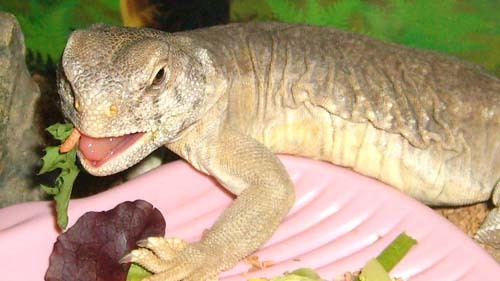 Suey has a new problem-Uncontrollable jerking
QuestionSuey eating veggies
QUESTION: Tracie,
Hi
Suey has a new problem-Uncontrollable jerking
QuestionSuey eating veggies
QUESTION: Tracie,
Hi
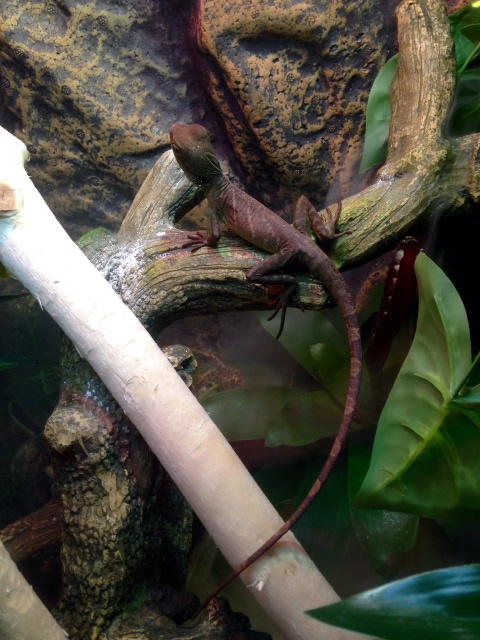 CWD mixed info
Question
PASCAL Enclosure
Hello Tracie,
I
CWD mixed info
Question
PASCAL Enclosure
Hello Tracie,
I
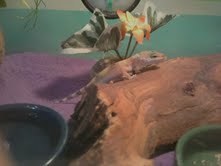 follow up to previous question
Question
Tiko
I got the smallest crickets I could find
follow up to previous question
Question
Tiko
I got the smallest crickets I could find
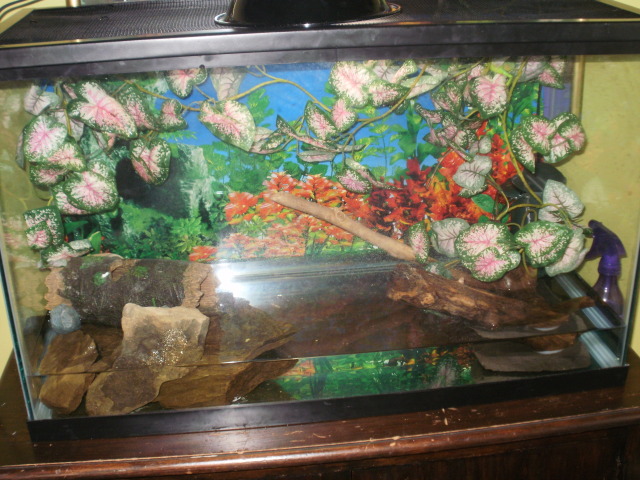 parasite in water dragon
QuestionQUESTION: My daughter has a Chinese water drago
parasite in water dragon
QuestionQUESTION: My daughter has a Chinese water drago
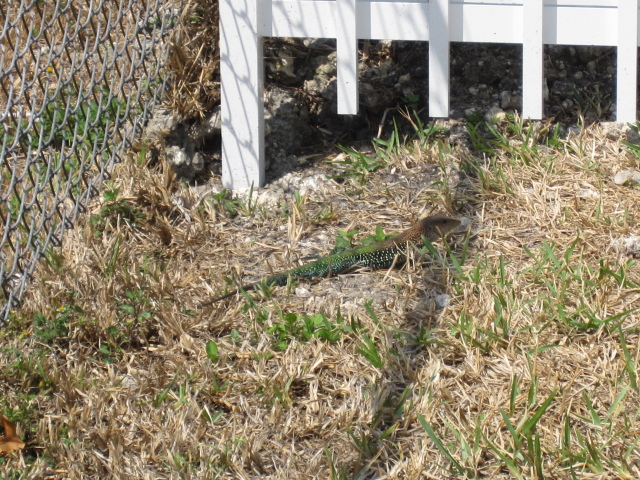 A few Bearded Dragon Questions
QuestionQUESTION: Ok I have a male normal colored baby
A few Bearded Dragon Questions
QuestionQUESTION: Ok I have a male normal colored baby